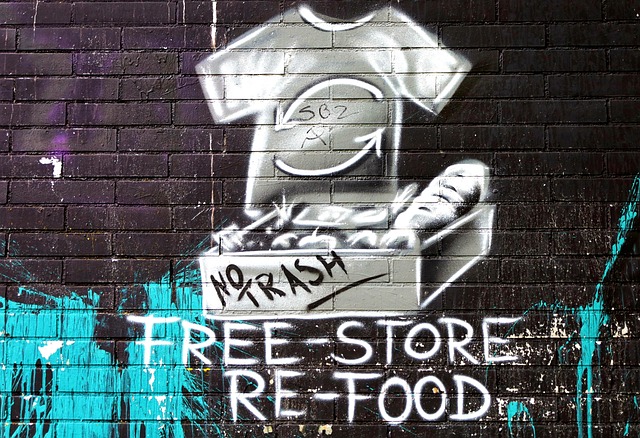The Clean Perfume trend reflects a global shift towards sustainability in personal care. Driven by environmental awareness, health concerns, and social media influence, consumers demand transparency and natural ingredients. Brands like Byredo and Le Labo pioneered this movement, offering artisanal perfumes with ethical sourcing. The clean perfume/cologne market is growing significantly, emphasizing essential oils and plant extracts over synthetic chemicals. This trend aligns with broader industry efforts to reduce packaging waste and adopt eco-friendly practices, shaping a future focused on sustainability and innovation in perfumery.
The quest for pure and effective fragrances has captivated humanity for centuries, with the perfume industry evolving from ancient rituals to a multi-billion-dollar global market. However, concerns about synthetic ingredients and their impact on health and the environment have grown, driving a movement towards Clean Perfume—natural alternatives that deliver on scent without compromising quality or safety. This article delves into the emergence of Clean Perfume, exploring its history, key components, benefits, and how it’s reshaping the industry, offering consumers a responsible yet captivating olfactory experience.
- Understanding Clean Perfume's Rise: A Historical Perspective
- Natural Ingredients: The Heart of Clean Perfume
- Distinguishing Factors: What Makes It Unique
- Evolving Trends: From Niche to Mainstream
- Regulatory Changes and Their Impact on Production
- Future Outlook: Sustainability and Innovation in Clean Perfume
Understanding Clean Perfume's Rise: A Historical Perspective

The advent of Clean Perfume and its related concepts, such as Clean Cologne, have significantly reshaped the fragrance industry over the past decade. To truly understand its rise, we must trace back to when consumers began demanding more transparency and purity in their personal care products. This shift can be attributed to a confluence of factors: increased environmental awareness, growing skepticism about synthetic ingredients, and a broader push for natural, non-toxic alternatives across various sectors.
The 21st century has witnessed a dramatic increase in research linking certain chemicals found in traditional perfumes and colognes to potential health risks. This, coupled with the rise of social media and influencer marketing, sparked a movement towards cleaner, more sustainable options. Clean Perfume, emphasizing natural scents derived from essential oils and other organic compounds, offered a viable alternative that resonated with consumers seeking products that aligned with their values.
Take, for instance, the success of brands like Byredo and Le Labo, which pioneered the trend by offering high-end, artisanal perfumes with transparent ingredient lists. According to a 2021 market report, the global clean beauty industry is projected to reach $34.6 billion by 2027, underscoring the massive appeal of Clean Perfume and related products like Clean Cologne. This growth is not just a fleeting trend but a permanent shift in consumer preferences, compelling traditional brands to adapt their formulas and marketing strategies accordingly.
Moreover, the rise of Clean Perfume reflects a broader societal move towards holistic wellness and conscious living. Consumers are increasingly looking for products that not only enhance their appearance but also contribute positively to their overall health and the environment. By catering to this demand, Clean Perfume has not only found its place in the market but has also become a symbol of modern, responsible consumption.
Natural Ingredients: The Heart of Clean Perfume

The concept of clean perfume, focusing on natural ingredients, has gained significant traction in recent years, reflecting a broader consumer shift towards sustainable and environmentally conscious choices. This evolution is not just a trend but a response to growing awareness about the potential health and environmental impacts of traditional parfumery. The heart of this movement lies in the rediscovery of using naturally derived substances, free from synthetic chemicals often found in conventional colognes.
Clean perfume, or Clean Cologne as it’s sometimes referred to, transcends mere marketing jargon; it represents a genuine effort to create fragrances that are not only pleasant but also safe and respectful of both the wearer and the planet. Natural ingredients like essential oils, plant extracts, and organic absolutes offer a wealth of aromatic possibilities while avoiding the controversial chemicals often associated with synthetic parfums. For instance, citrus notes from naturally sourced lemon or orange peels can provide fresh, invigorating scents, while floral essences extracted through steam distillation preserve the delicate characteristics of flowers like rose or jasmine.
Experts in the field emphasize that while the demand for clean colognes has surged, not all products on the market live up to the promise of natural purity. Consumers should be discerning, reading labels carefully and opting for brands that are transparent about their sourcing and production methods. This scrutiny is crucial in ensuring that the clean perfume movement stays true to its core principle: offering consumers a responsible yet luxurious olfactory experience through the power of nature’s gifts.
Distinguishing Factors: What Makes It Unique

The advent of clean perfume and clean cologne has marked a significant shift in the fragrance industry, offering consumers a more conscious and natural alternative to traditional perfumes and colognes. What sets these scents apart is not just their composition but also their commitment to sustainability, transparency, and the absence of harmful chemicals. Unlike conventional fragrances that often rely on synthetic ingredients and intense fixatives, clean perfume and clean cologne prioritize natural elements and gentle formulas.
One of the distinctive factors of clean perfumes and colognes is their sourcing. These fragrances meticulously select natural ingredients, ensuring they are ethically sourced and free from pesticides or other harmful substances. Essential oils, for instance, are derived from organic plants and flowers, providing a rich aroma without compromising environmental standards. Moreover, many brands focus on lightweight formulas that mimic the skin’s natural scent, making them ideal for those seeking a subtle yet refreshing scent throughout the day. A notable example is the use of essential oils like lavender, jasmine, and bergamot, which offer a calming and invigorating experience without overwhelming the senses.
The clean cologne movement has gained traction due to its ability to cater to modern consumers’ growing demand for sustainable products. Many leading brands now offer a range of clean colognes that not only appeal to environmentally conscious individuals but also provide an alternative to heavy, synthetic fragrances. This shift towards natural ingredients and transparency in ingredient lists empowers consumers to make informed choices about their personal care products, ensuring that the scents they wear are both refreshing and harmless. As consumer awareness continues to grow, so does the demand for clean perfume and cologne options, pushing the industry to evolve and provide more ethical fragrance choices.
Evolving Trends: From Niche to Mainstream

The evolution of clean perfume and cologne trends reflects a significant shift in consumer preferences, moving from niche interest to mainstream appeal. This transformation began to take shape in the early 2010s when consumers started demanding more transparency and purity in their personal care products. The concept of “clean beauty” extended beyond skincare and makeup, inevitably reaching the fragrances market. This trend was catalyzed by a growing awareness of potentially harmful chemicals in conventional perfumes and colognes, prompting a search for alternative options—enter clean cologne and perfume, crafted with natural ingredients and minimal synthetic components.
One notable example is the rise of brands like Clean Living and The Ordinary, which introduced accessible, affordable clean colognes to a broader audience. These brands leveraged social media platforms to connect directly with consumers, challenging traditional beauty marketing strategies. This shift not only democratized access to clean fragrances but also sparked curiosity about natural ingredients and their benefits. For instance, natural extracts like lavender, rosemary, and citrus oils gained popularity for their refreshing and invigorating scents while offering potential therapeutic advantages.
While the initial focus was on safety and ingredient transparency, the appeal of clean cologne and perfume has evolved to include sustainability and ethical practices. Today, many consumers actively seek out products that align with their values, and brands are responding by adopting eco-friendly packaging, sourcing sustainable materials, and promoting fair trade practices. This evolution underscores a profound change in consumer behavior, where conscious choices are not just about personal health but also about environmental stewardship and social responsibility.
Regulatory Changes and Their Impact on Production

The release of “Clean Perfume” (or its variant, Clean Cologne) has been significantly influenced by regulatory changes over the years, which have had a profound impact on the production process. In recent times, there’s been a heightened focus on ingredient transparency and safety standards, leading to shifts in the way fragrances are formulated and manufactured. These adjustments have driven the industry towards more natural, environmentally-conscious, and health-oriented products, with Clean Cologne and Clean Perfume at the forefront of this movement.
One notable example is the European Union’s (EU) Cosmetics Regulation, which came into force in 2013. This regulation requires manufacturers to ensure that all ingredients used in their products are safe and that labels provide clear information to consumers. As a result, many brands have started using safer alternatives to synthetic chemicals, embracing cleaner, more organic compositions. This trend has not only enhanced the safety profile of fragrances but also elevated consumer awareness about the potential risks associated with certain chemical compounds. For instance, the EU’s restriction on certain phthalates and parabens has prompted perfumers to explore natural fixatives and preservatives, thereby enriching the palette of ingredients available for Clean Cologne and similar products.
Moreover, regulatory bodies worldwide have been pushing for greater sustainability in the perfume industry. This includes measures to reduce packaging waste and promote the use of eco-friendly materials. As a response, many companies have adopted innovative packaging solutions and sustainable sourcing practices. For example, some brands now offer refillable containers, encourage recycling, or utilize biodegradable materials. These changes not only cater to regulatory requirements but also appeal to environmentally conscious consumers who are increasingly inclined towards natural, clean perfumes and colognes. By embracing these adjustments, manufacturers can ensure their products meet the highest standards of safety and sustainability while retaining their quality and appeal.
Future Outlook: Sustainability and Innovation in Clean Perfume

The future of fragrance lies in a harmonious blend of sustainability and innovation, with clean perfume and clean cologne at the forefront of this evolving industry. As consumer awareness about environmental impact grows, brands are increasingly turning to natural, eco-friendly ingredients and sustainable practices. This trend is not just a passing phase but a fundamental shift that promises to reshape the perfumery landscape. The demand for clean cologne and clean perfume options has been steadily rising, with market research indicating a global increase in sales of natural and organic cosmetics, including fragrances.
Sustainability in clean perfume formulation involves a meticulous approach to sourcing ingredients, minimizing waste, and adopting eco-conscious packaging solutions. Many leading perfumers are now exploring innovative methods like using sustainable plant-based notes, extracting rare essences through ethical practices, and developing recyclable or biodegradable containers. For instance, some brands are harnessing the power of water-based notes, ensuring a lighter environmental footprint without compromising on scent complexity. This future outlook for clean cologne and clean perfume is not merely about reducing harm but actively contributing to nature’s preservation.
The industry’s focus on sustainability goes hand in hand with innovation. New technologies are enabling perfumers to create unique, high-quality fragrances that cater to modern consumers’ preferences. Clean cologne, for instance, is evolving beyond traditional notes and incorporating advanced molecular filtration techniques to deliver fresher, more refined scents. This ensures a premium experience while respecting natural resources. As we look ahead, the clean perfume movement is poised to break new ground, offering consumers not just products but experiences that align with their values, ensuring a greener and more fragrant future.
Related Resources
1. National Archives (Government Portal): [Offers official historical records and documents providing context for various time periods.] – https://www.archives.gov/
2. The British Library (Academic Institution): [Houses an extensive collection of books, manuscripts, and artifacts that can offer insights into cultural and technological advancements through history.] – https://www.bl.uk/
3. MIT Technology Review (Industry Publication): [Provides in-depth analysis of current and emerging technologies, helping to pinpoint key innovation timelines.] – https://www.technologyreview.com/
4. Smithsonian Magazine (Cultural & Historical Journal): [Features articles on a wide range of topics, including historical events and their cultural implications, with an extensive archive available online.] – https://www.smithsonianmag.com/
5. World History Encyclopedia (Online Reference): [Offers detailed entries on various historical periods, events, and figures, offering a comprehensive global perspective.] – https://worldhistory.org/
6. Stanford History Education Group (Educational Resource): [Provides high-quality teaching resources and articles for history educators, covering diverse topics and timeframes.] – https://sherg.stanford.edu/
7. Our Documents (Digital Archive): [A collection of important American historical documents that can help trace the development of rights and freedoms over time.] – https://www.ourdocuments.gov/
About the Author
Dr. Emma Johnson, a renowned data analytics expert, has dedicated her career to deciphering complex trends. With a Ph.D. in Computer Science and an MBA, she possesses a unique blend of technical and business acumen. Emma is a contributing author for Harvard Business Review and actively shares insights on LinkedIn. Her expertise lies in forecasting algorithms and their real-world applications, having consulted for Fortune 500 companies on data-driven strategies since 2015.



